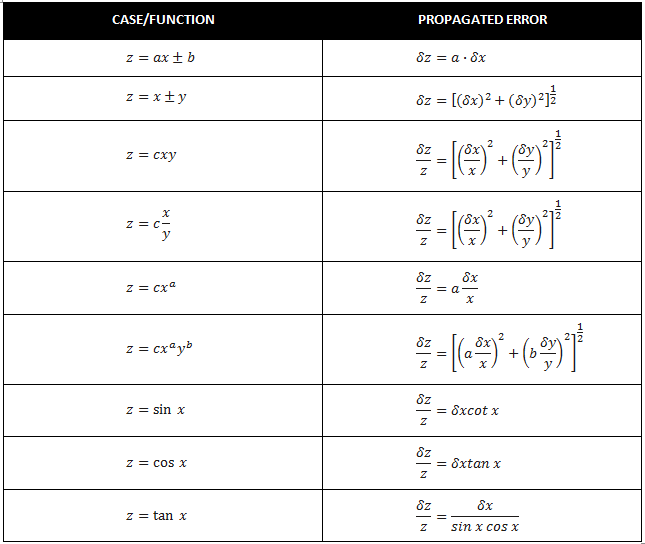Propagation of Uncertainty
Propagation of uncertainty is a method that transmits the uncertainties of independent variables through an equation to estimate the uncertainty of the final calculation. When physical quantities cannot be measured with a single direct measurement, we typically perform indirect measurements of two or more quantities to calculate the desired measurement result. By applying this methodology, we must estimate the uncertainty of our independent measurement results and use propagation rules to estimate the uncertainty of the final calculation.
Rules for Propagating Uncertainty
To properly propagate uncertainty, there are rules that must be followed. These rules allow us to propagate uncertainty for many different types of physical equations. To help, I have compiled a list of many of the common mathematical functions encountered when calculating measurement results. Refer to the chart below for the rules of propagating uncertainty.
For an example of applying these rules, please see my article How to Propagate Uncertainty. If you have any questions or comments, please feel free to contact me at [email protected].





2 Comments